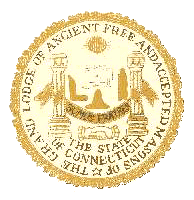History
Freemasonry was first established in Connecticut from the city of New Haven in 1750. [2] David Wooster was the charter Master of "The Lodge at New Haven", which later became Hiram Lodge No. 1. This lodge was formed under warrant from St. John's Provincial Grand Lodge at Boston. [3]
The Grand Lodge of Connecticut was founded on July 8, 1789 with Pierpont Edwards as its first Grand Master. At the founding of the Grand Lodge of Connecticut, it had 14 lodges with five more being chartered in the following two years. The first lodge chartered by the Grand Lodge of Connecticut was Moriah Lodge No. 15 in Brooklyn Connecticut constituted on October 15, 1790.
In 1887, Hiram Lodge challenged the authority of the Grand Lodge of Connecticut to dictate the style of ritual it would use. [4]
This page is based on this
Wikipedia article Text is available under the
CC BY-SA 4.0 license; additional terms may apply.
Images, videos and audio are available under their respective licenses.



